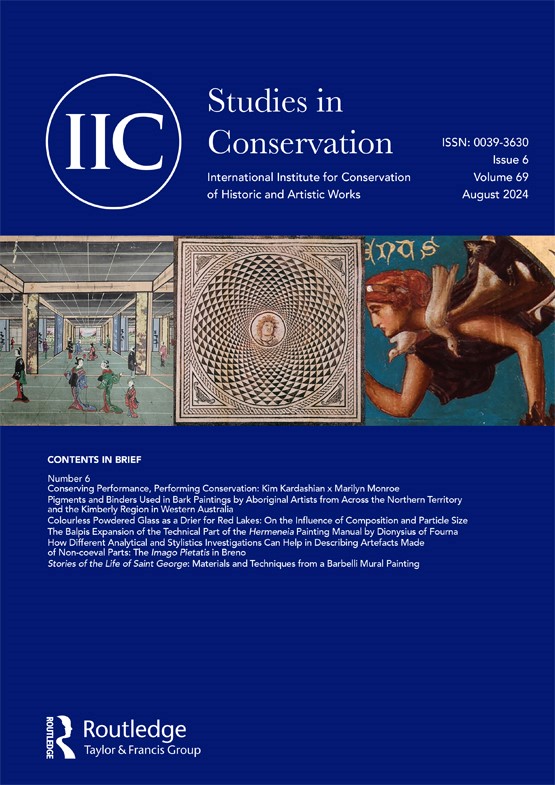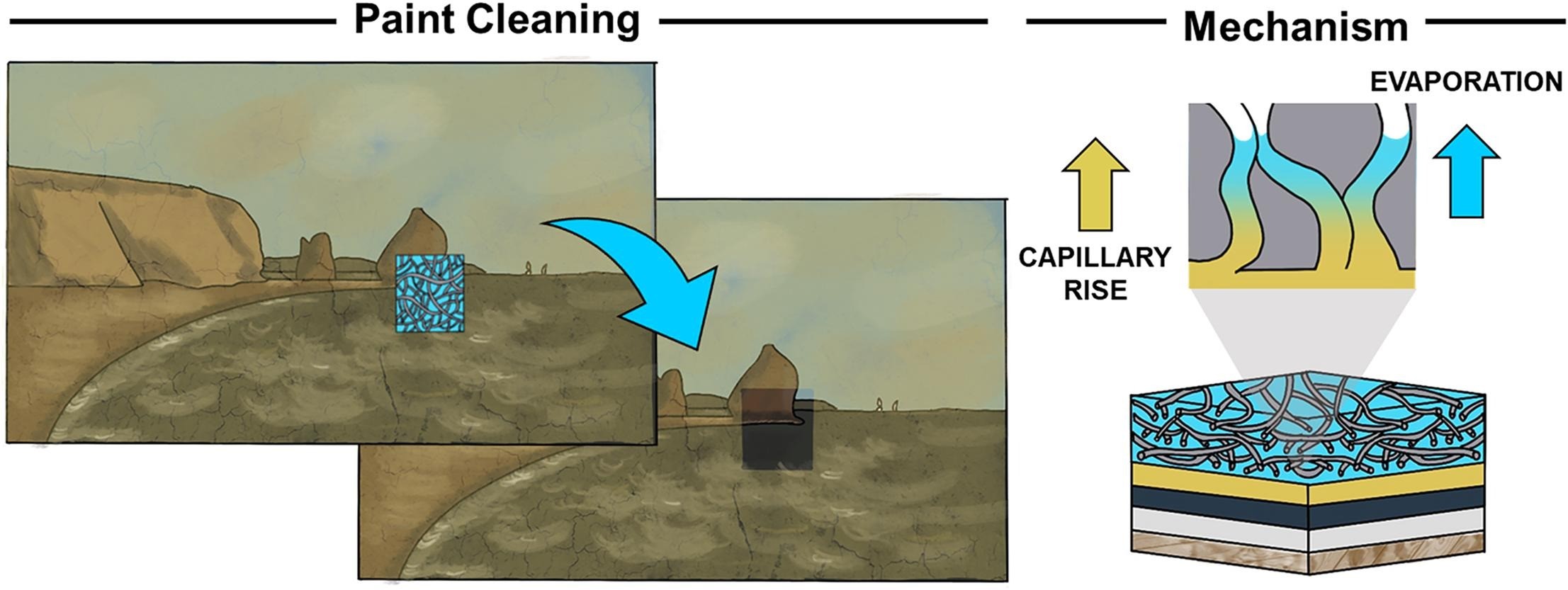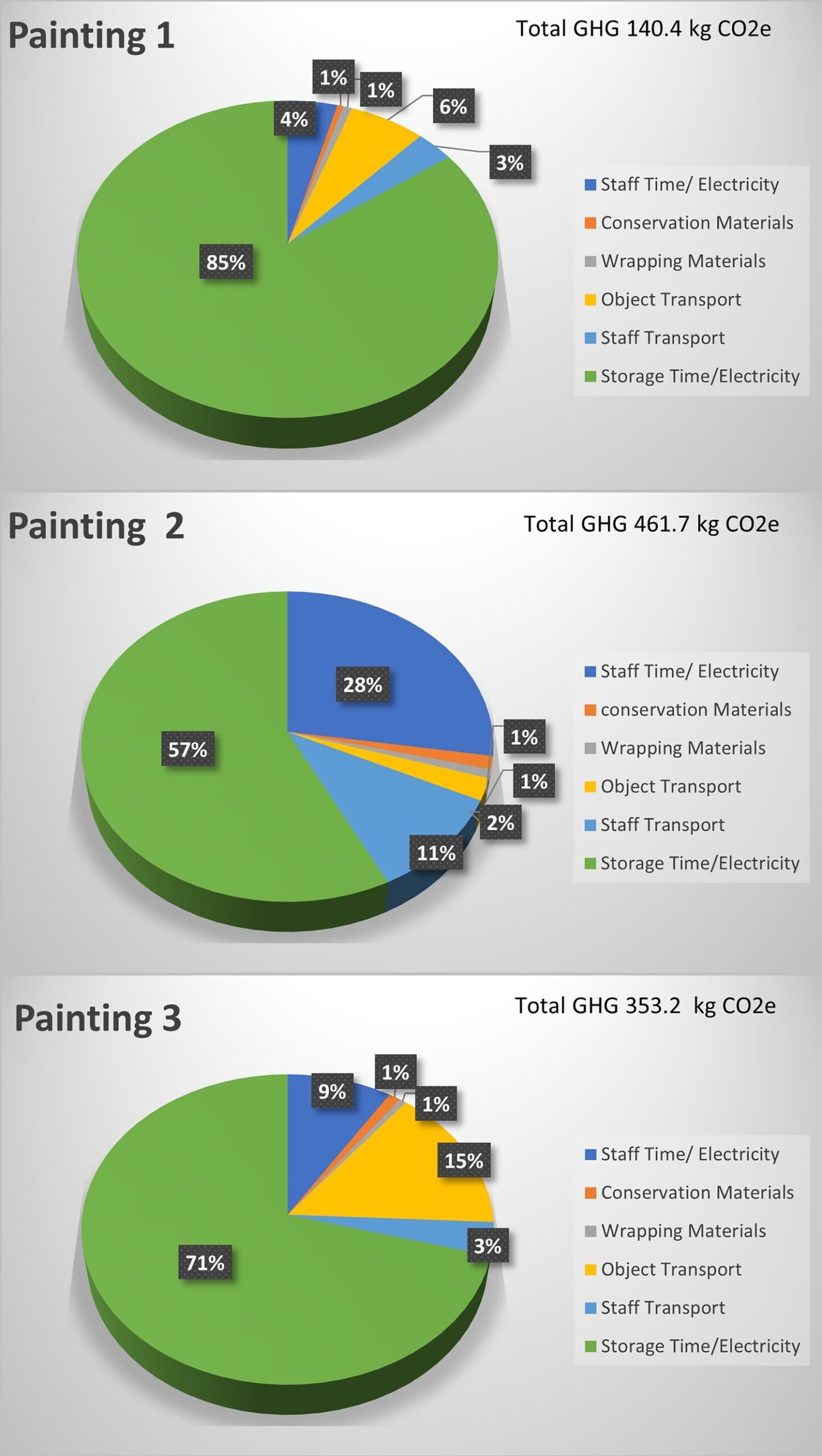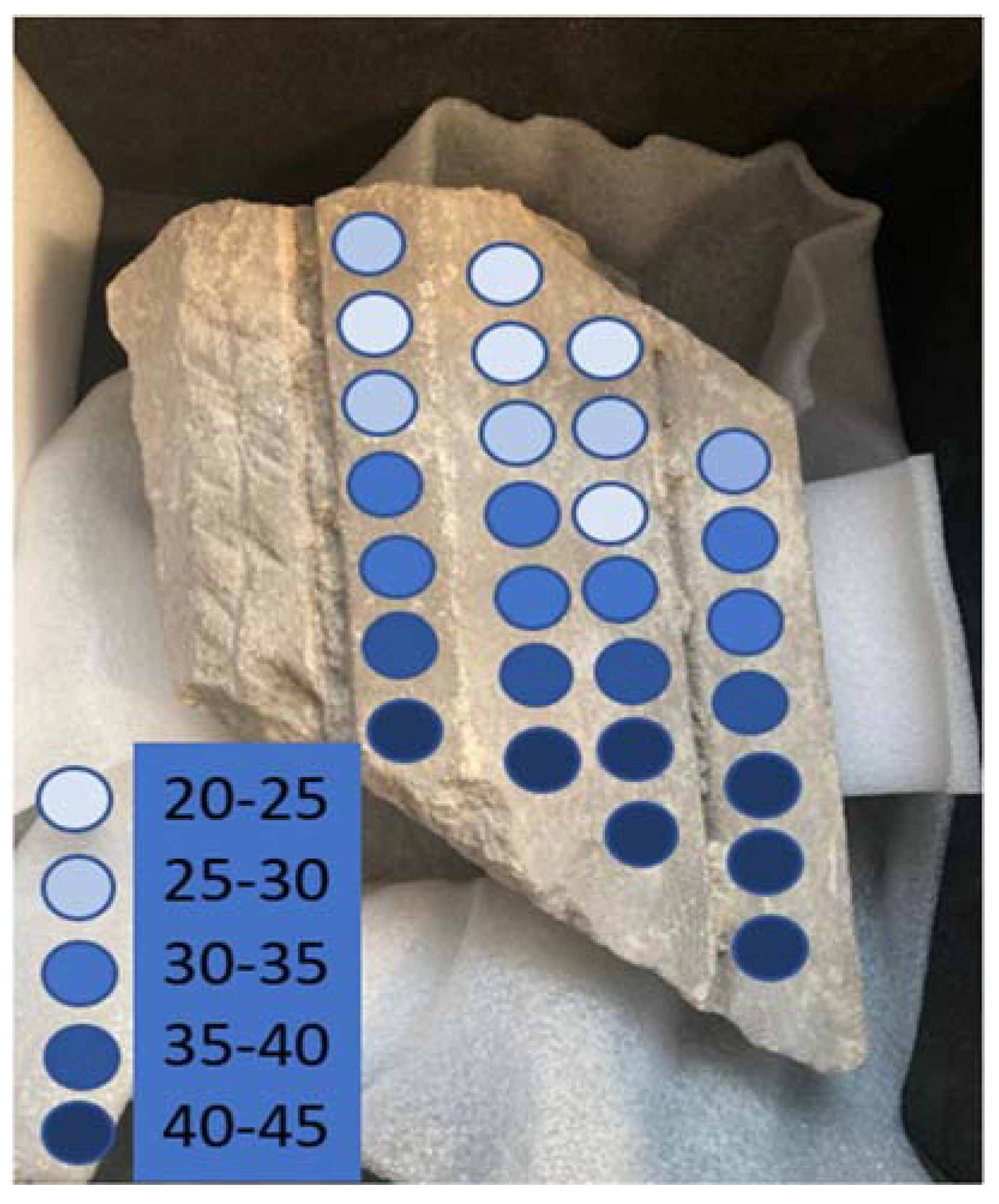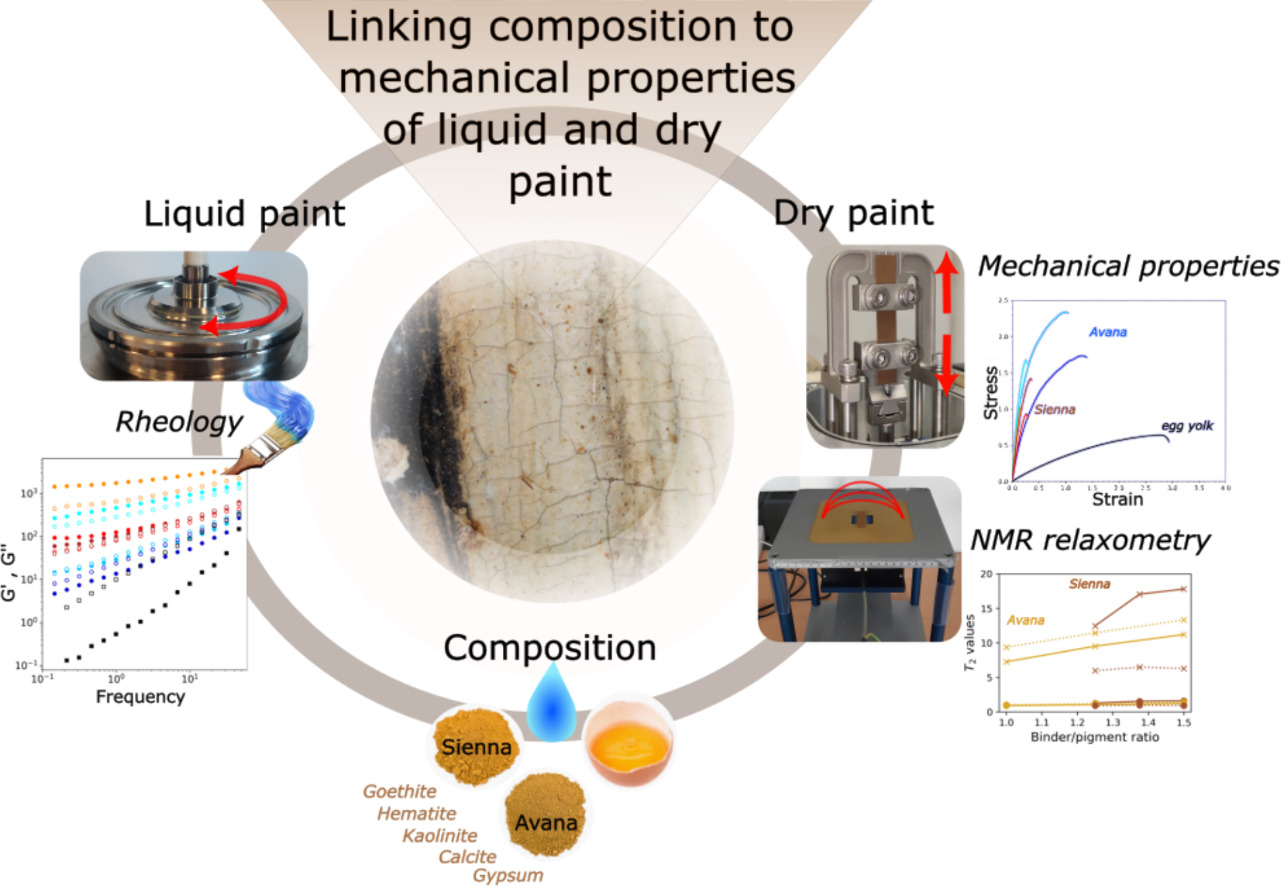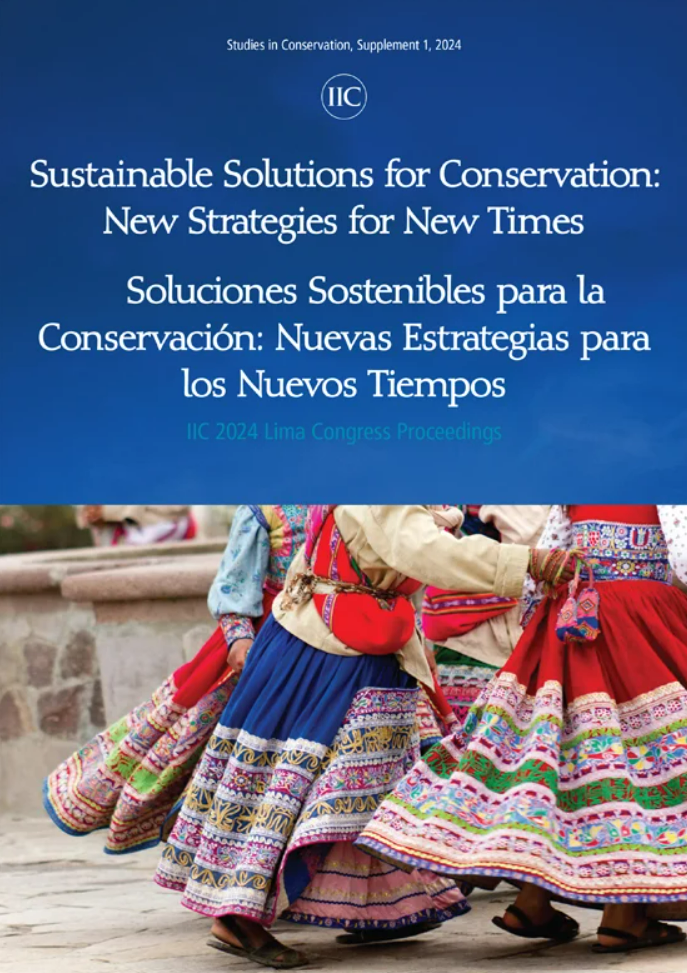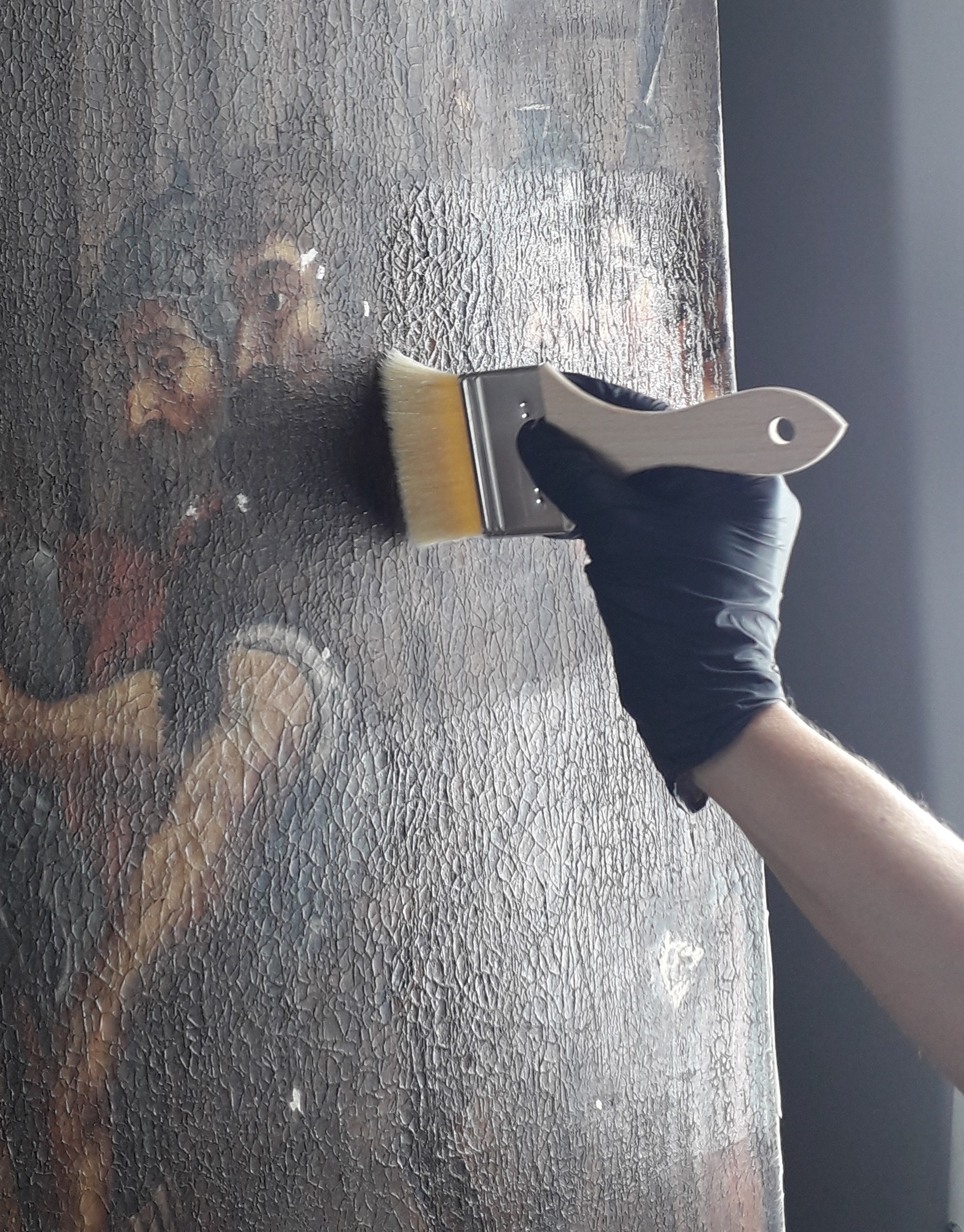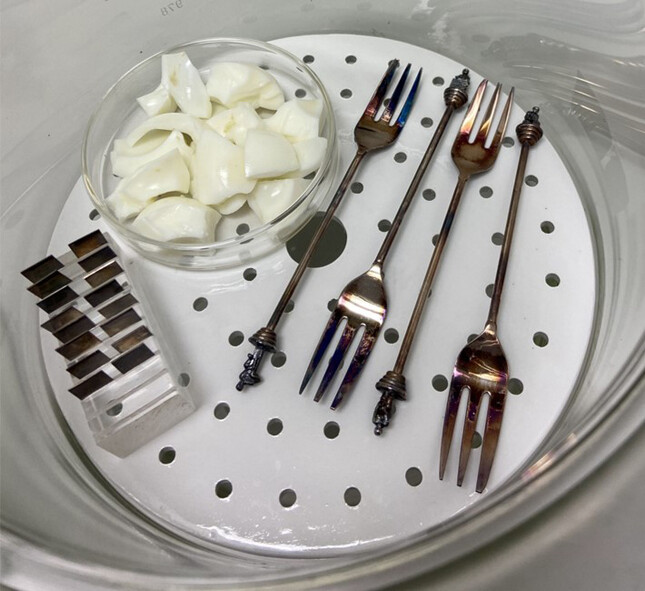Publications
Green Alternatives for Archaeological Iron Stabilization
Petrasz, P., Zhioua, S., James, S., Bindschedler, S., Junier, P., & Joseph, E. (2024). Green Alternatives for Archaeological Iron Stabilization. Studies in Conservation, 1–11. https://doi.org/10.1080/00393630.2024.2336880
ABSTRACT
One of the most challenging types of artifact occurring within museum collections is unstable chloride-contaminated archaeological iron. A high chloride concentration causes cracking, flaking and leads to full mineralization, in effect making objects fragile. Consequently, removal of chloride ions plays a key role in stabilization treatment, while preserving the integrity of the corroded iron object. Despite the variety of stabilization methods, all have significant disadvantages, including a lack of sustainability. Within the framework of the Horizon Europe project GoGreen the potential of microbial biosorption to stabilize archaeological iron artefacts is being investigated. Dry biomass of the fungi Meyerozyma sp. and Saccharomyces cerevisiae was studied to remove chloride ions. Preliminary tests were carried out on artificially-aged steel samples. To assess the activities of the microorganisms’ functional groups and biosorption capabilities as a potential green stabilization treatment, analytical techniques including FTIR, Raman spectroscopy, and SEM-EDX were used. The results demonstrate two promising paths for the development of green stabilization treatments based on fungal biomass: passive adsorption into the cell wall and conversion of reactive corrosion products into more stable compounds. The use of microbial biomass opens up promising perspectives for the development of more sustainable solutions in archaeological iron stabilization, while avoiding the generation of toxic waste in our environment.
Microporous electrospun nonwovens combined with green solvents for the selective peel-off of thin coatings from painting surfaces
Ramacciotti, F., Sciutto, G., Cazals, L., Biagini, D., Reale, S., Degano, I., Focarete, M.L., Mazzeo, R., Thoury, M., Bertrand, L., Gualandi, C. & Prati, S. (2024). Microporous electrospun nonwovens combined with green solvents for the selective peel-off of thin coatings from painting surfaces. Journal of Colloid and Interface Science, 663, 869-879.
ABSTRACT
Over the last few decades, significant research efforts have been devoted to developing new cleaning systems aimed at preserving cultural heritage. One of the main objectives is to selectively remove aged or undesirable coatings from painted surfaces while preventing the cleaning solvent from permeating and engaging with the pictorial layers. In this work, we propose the use of electrospun polyamide 6,6 nonwovens in conjunction with a green solvent (dimethyl carbonate). By adjusting the electrospinning parameters, we produced three distinct nonwovens with varying average fiber diameters, ranging from 0.4 μm to 2 μm. These samples were characterized and tested for their efficacy in removing dammar varnish from painted surfaces. In particular, the cleaning process was monitored using macroscale PL (photoluminescence) imaging in real-time, while post-application examination of the mats was performed through scanning electron microscopy. The solvent evaporation rate from the different nonwovens was evaluated using gravimetric analysis and Proton Transfer Reaction- Time-of-Flight. It was observed that the application of the nonwovens with small or intermediate pore sizes for the removal of the terpenic varnish resulted in the swollen resin being absorbed into the mats, showcasing a peel-off effect. Thus, this protocol eliminates the need for further potentially detrimental removal procedures involving cotton swabs. The experimental data suggests that the peel-off effect relates to the microporosity of the mats, which enhances the capillary rise of the swollen varnish. Furthermore, the application of these systems to historical paintings underwent preliminary validation using a real painting from the 20th century.
Calculating the Carbon Footprint of Interventive and Preventive Conservation at English Heritage, UK
Tate-Harte, A., & Thickett, D. (2024). Calculating the Carbon Footprint of Interventive and Preventive Conservation at English Heritage, UK. Studies in Conservation, 1–10. https://doi.org/10.1080/00393630.2024.2336814
ABSTRACT
English Heritage (EH) is a large cultural heritage organisation, which cares for 1million artefacts over 136 sites. Preventive conservators and conservation scientists manage a mixture of controlled and uncontrolled historic site environments housing diverse object types. Two fine art conservators manage treatment programmes for easel and wall paintings, gilded frames and gilded furniture. Other objects are managed by preventive conservators and outsourced to private conservation studios for treatment. Sustainability is becoming an increasingly important part of the conservation team's agenda. Measuring and understanding the carbon impact of both the preventive and interventive conservators’ work was an important starting point for creating more sustainable solutions. To create a baseline for future monitoring and carbon reduction, carbon footprint studies were undertaken to evaluate the carbon impact of interventive painting conservation treatments; preventive conservation framing (adapting frames and making microclimates for displaying paintings in non-ideal environments); and running conservation (humidistatic) heating vs air conditioning systems in display rooms.
Analysis of Salts and Clays for Conservation of Porous Cultural Heritage
Thickett, D. (2023). Analysis of Salts and Clays for Conservation of Porous Cultural Heritage. Applied Sciences, 13(22), 12434.
ABSTRACT
Soluble salts and clays are major intrinsic causes of degradation of porous cultural heritage materials. Identifying their presence and concentrations can allow environmental control to prevent decay before it is observed. Such control is often energy- and carbon-intensive and better targeted towards those objects that require it rather than a general approach. The use of poultices has been investigated to determine salt species and concentrations in stone to replace drilling samples. A non-invasive method using two types of moisture meter has been developed to map the conductivity of salt solutions in stone. Fourier transform and near-infrared spectroscopies have been investigated to non-invasively quantify the amount of muscovite clay in limestones without the need to take drilled samples. Salts can react with extrinsic acetic acid from display and storage environments, causing extensive damaging surface efflorescences. A rapid analytical procedure based on external reflectance Fourier transform infra-red (FTIR) microscopy has been developed. This allows analysis of multiple salts on a cuneiform tablet surface. Analyses of soluble salts inside the tablets has indicated the sulphate-to-chloride ratio is a good predictor of whether mixed acetate efflorescences will occur on exposure.
Multiscale characterization of liquid and dry egg tempera paints based on ochre pigments
Gerony, F., Poznańska, K., Bujok, S., de Viguerie, L., Michot, L., Lanson, B., Casale, S., Gaslain, F., Korecki, J., Freindl, K., Spiridis, N., Thillaye du Boullay, C., Anne-Laure Rollet, A-L., Mériguet, G., Jaber, M. (2024). Multiscale characterization of liquid and dry egg tempera paints based on ochre pigments. Progress in Organic Coatings, 197 (2024), 108820.
ABSTRACT
Understanding the mechanical properties of paints is crucial for their preservation, as these properties determine how paints deform under climate-induced stress and, consequently, affect their durability. This study focuses on egg-tempera paints, whose mechanical characteristics have been minimally explored so far. Various formulations using two natural ochre pigments were investigated. Initially, the pigments were characterized to identify compositional and morphological differences. Rheological analysis was conducted to study the liquid properties of the formulations. Tensile tests and dynamic mechanical analysis were performed on unsupported dry paints to assess their mechanical properties. Additionally, single-sided NMR was used non-invasively to probe the network mobility before and after nine months of aging, providing insights into the network tightness. It was found that ochre-based paints display significant brittleness. The viscoelastic properties of tempera paints are predominantly influenced by the type of earth pigments used and the pigment-to-binder ratio. Importantly, the liquid properties were found to correlate with the solid-state behavior, emphasizing the critical role of formulation in the final performance of tempera paints.
Reconsidering Museums’ Climate and Seasonal Adjustment for Vulnerable Artifacts
Bujok, S., Bridarolli, A., Łukomski, M., & Bratasz, Ł. (2024). Reconsidering Museums’ Climate and Seasonal Adjustment for Vulnerable Artifacts. Studies in Conservation, 69(sup1), 18–24. https://doi.org/10.1080/00393630.2024.2375162
ABSTRACT
The paper provides new experimental evidence for vulnerable artifacts on the dependence of failure strain on the loading rate corresponding to typical environmental loads lasting between hours and months. Animal glue-based ground was chosen for this study as an easily available, hygroscopic and brittle material as well as due to its abundance in collections and its relevance when discussing the risk of mechanical damage to objects. Gesso specimens were tested using dynamic mechanical analysis and tensile testing at different frequencies, under a variety of loading rates and temperatures. The time-temperature superposition principle was used to predict the material response to slow deformations (lasting hours to months) that are otherwise inaccessible on laboratory timescales. The results demonstrate that brittle materials such as animal glue-based grounds do not benefit from longer cycles of applied loads as failure strain is not time-dependent within the investigated timescale.
An innovative methodology for testing and selecting greener solvents for varnishing paintings
Fife, G., Samyn, P., Stabik, B., Chauvat, C., & Sels, H. (2025). An innovative methodology for testing and selecting greener solvents for varnishing paintings. npj Heritage Science, 13:40. https://doi.org/10.1038/s40494-025-01638-6
ABSTRACT
Organic solvents remain needed for certain treatments in cultural heritage conservation and restoration, including the application of traditional and synthetic resin varnishes on paintings. This research describes a collaborative approach for selecting and testing alternative greener sustainable solvents for this purpose. With commonly used solvent xylene targeted for substitution, initial solvent suggestions were made employing the SUSSOL (sustainable solvent selection and substitution) software tool considering key physical properties of the solvents and specified safety, health and environment hazard boundaries. In parallel HSPiP (Hansen Solubility Parameters in Practice) software was employed after the experimental determination of Hansen solubility parameters and the solubility of selected resins. Fourteen alternative solutions were selected and prepared from commonly used resins for application testing on reference substrates (e.g., Leneta cards and prepared canvas test boards). This testing included (1) the assessment of essential working properties, paint film solvent sensitivity, drying and film formation, and (2) standard coating tests such as water resistance, gloss, and color measurements. Comparable reference resin solutions used as varnishes, prepared with xylene and other solvents, were simultaneously evaluated. First standardized solvent tests provided a practical assessment of the sensitivity of the paint films to the substitute and reference solvents. Varnishing tests were subsequently performed on two historical paintings in order to evaluate the working properties and esthetic qualities of the resin solutions. The novel varnish Regalrez 1094 in isoamyl acetate showed very good working properties and gave a good visual result on both paintings. The resin solution Paraloid B72 in anisole showed good visual results on both paintings, while demonstrating acceptable working properties. This study illustrated that good working properties, protective and visual film qualities could be achieved with varnishes based on typical resins in alternative solvents. Various alternative greener solvents and their mixtures can thereby be suggested for dissolving and applying these resins. The approach within this study acknowledges the individuality of an artwork, which guides the selection of the most appropriate resin solution.
Natural and Artificial Aging Methods For Silver Mock-ups In Recent Conservation and Heritage Studies: A Short Review
Wu, Q., H. Zhou, L. Bertrand, M. Stols-Witlox, L. Brambilla and E. Joseph. Natural and Artificial Aging Methods For Silver Mock-ups In Recent Conservation And Heritage Studies: A Short Review. Chemistry-Methods (2025) e202400055. https://doi.org/10.1002/cmtd.202400055.
ABSTRACT
Silver has been widely used for art and heritage objects throughout history, due to its excellent ductility, malleability and brilliant metallic lustre. However, silver objects tarnish over time and must be regularly treated to maintain their appearance. In conservation and heritage studies, naturally or artificially aged silver mock-ups are often used to simulate the tarnishing conditions of valuable historical silver objects. Over the last few decades, many research groups have proposed different aging protocols. In this paper, we reviewed the silver aging protocols employed in recent studies in the field. Although the chemistry-based aging methods are most widely used, issues regarding alterations of the tarnish stratigraphy and negative influences on environment and operator safety should not be neglected. This review aims to provide important references for conservators, scientists and researchers to select safe and suitable aging methods for building their own mock-up systems, and to encourage the development of more sustainable aging protocols for future conservation of historical silver objects.
Presentations
Presentation of Katrien Keune (UvA/Rijksmuseum) at CHEMCH 2024, where she presented the overall goals of GoGreen: "The GoGreen project: Developments of Green Technologies for Preventive and Remedial Conservation Practics".

